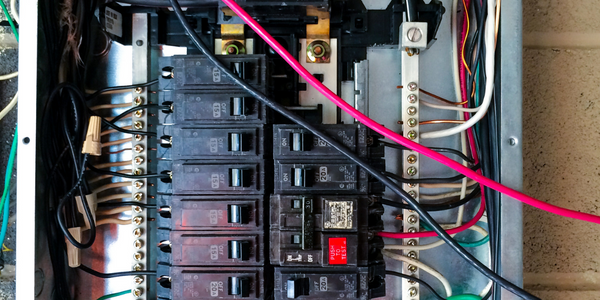技术
- 传感器 - 全球定位系统
用例
- 租赁金融自动化
关于客户
Enigma 是一家在金融科技领域运营的数据管理和情报公司。他们专注于利用数据为行业中的各种挑战提供见解和解决方案。他们的主要关注领域之一是反洗钱,旨在协助执法部门识别非法活动。为了实现这一目标,他们认识到需要将位置数据纳入其运营和决策过程。他们不仅看到了位置数据在反洗钱方面的潜力,而且还看到了营销和信用风险管理等其他领域的潜力。为了利用这一潜力,他们与位置智能平台 CARTO 合作开发了一款制裁跟踪器,将位置数据与现有的财务数据集成在一起。
挑战
金融科技 (fintech) 行业在认识位置数据的存在和可用性及其潜在好处方面面临着重大挑战。该部门拥有丰富的内部数据集和监控系统,可以通过位置数据的集成来增强这些数据集和监控系统。特别是在反洗钱领域,位置数据与金融数据的结合可能有助于协助执法和识别非法活动。然而,如何将这些数据纳入日常运营的意识和理解仍然是一个重大障碍。此外,位置数据的潜力不仅限于反洗钱,还可以通过提供对人们居住地点及其周围社区的深入了解,为营销和信用风险管理提供机会。
解决方案
数据管理和情报公司 Enigma 与位置情报平台 CARTO 合作,应对这些挑战。他们开发了一种制裁跟踪器,利用位置数据来绘制违反制裁行为以及受制裁个人和实体的位置。该解决方案不仅提供了制裁的地理代表性,还根据地址揭示了受制裁个人和实体之间的联系。位置数据与财务数据的集成可以更全面地了解制裁的影响以及相关各方之间的关系。该解决方案展示了位置数据在增强金融科技行业运营和决策流程方面的潜力,特别是在反洗钱、营销和信用风险管理等领域。
运营影响

Case Study missing?
Start adding your own!
Register with your work email and create a new case study profile for your business.
相关案例.

Case Study
Digital Transformation in Insurance: A Case Study of Menora Mivtachim
Menora Mivtachim, one of Israel's largest pension fund and insurance carriers, was facing a significant challenge due to demographic trends in Israel. The growing rate of retirement planning and services was putting unprecedented pressure on the already strained insurance sector. The pension claims process was bottlenecked with complexities, bureaucracy, and errors. Menora Mivtachim's existing pension process was heavily manual and spreadsheet-based, requiring a team of 10 full-time employees to manage. The process involved gathering applicant information, conducting personal surveys, compiling bank information, and finalizing agreements. To leverage the growing opportunity in the retirement sector and position themselves as innovative insurtech leaders, Menora Mivtachim needed to digitalize their process, streamline the claims experience, and reduce quote times through automated processes.

Case Study
ANZ Bank's Digital Transformation with Nintex Advanced Workflow
ANZ Bank, one of the top 50 banks in the world and the fastest-growing bank in Indonesia, was facing a challenge with its rapidly increasing transaction volume. The bank's existing business processes and workflow were becoming overwhelmed. Like most banks in Indonesia, ANZ was manually handling document submission and verification. Customers filled out paper loan applications and supporting documents, then delivered them to bank branches by mail or courier. Branch officers traveled to the bank’s headquarters or used postal mail, email, and phone calls to submit loan documents for verification. Lost or inaccurate documents created more emails and phone calls. Additionally, ANZ had to adhere to strict verification and financial regulations, including the Foreign Accounts Compliance Act. This act requires that all banks outside the United States provide key information about U.S. clients, including citizenship validation, to the Internal Revenue Service–a complex yet crucial process.

Case Study
Automation in Mining: Unleashing Productivity and Efficiency with 5G
The mining industry, a significant contributor to global economic activity with revenues exceeding USD 500 billion, is facing a challenge of improving efficiency and profitability. The industry is gradually shifting its focus towards automation as the next area of opportunity. Boliden, one of the world's most successful mining companies, operates the Aitik mine, the largest open pit in Europe. The Aitik mine is expanding, and with the increase in production from 36 million metric tons of ore to 45 million metric tons, the amount of rock removed will also increase significantly. However, increasing the number of machines required for rock removal in a busy mine is not a straightforward task. Additionally, every blast creates toxic gases that need to dissipate before humans can enter the area and begin excavation. The challenge lies in improving efficiency, managing the increased production, and ensuring safety in the harsh mining environment.

Case Study
Streamlining Agricultural Automation with Eaton’s Package Solution
Grossi Electric, a full-service electrical contracting company, was tasked with facilitating the hulling, dehydrating, and preparation processes at a walnut processing plant in Waterford, California. The company aimed to explore innovative options for creating cleaner and more efficient control panels that would eliminate the intensive time, labor, and costs associated with excessive point-to-point wiring. As a rapidly growing electrical contracting company, Grossi Electric was also concerned about managing risk and cost while attempting to establish a new and unfamiliar service offering in a mature market for control products. The walnut processing plant presented a prime learning opportunity for the company to discover the best way to build more tailored control panels for its customers. The challenge was to enable a lean automation process that was smarter, simpler, more effective, and of unique advantage for clients.

Case Study
Dell's Transformation: Boosting HR Productivity with RPA and Workday
Dell Technologies, a global tech giant with over 160,000 employees, was grappling with high-volume and repetitive transactional HR processes. The company was seeking to improve efficiency and cost-effectiveness while freeing up HR employees for higher-value, strategic work. The challenge was to eliminate transactional work for end-to-end processes such as open requisition recruiter assignments, onboarding process reminders and status updates, and offer status management. This would allow HR employees to focus more on person-to-person interactions.

Case Study
Overcoming Data Challenges in FinTech: A Case Study
The Covid-19 pandemic has acted as a catalyst for the FinTech sector, accelerating investments and technological progress. However, data and technology remain significant challenges, hindering further progress for FinTechs and their partnering traditional financial institutions. Among FinTechs globally, 81 percent have reported data to be their biggest technical challenge. These data issues are split between leveraging data for AI-ML (faced by 41 percent) and connecting to customer applications and data systems (faced by 40 percent). Other data issues faced by FinTechs include security (40 percent) and deployment in multiple clouds (39 percent). The consequences of these data issues include trouble innovating further due to a lack of clear picture about the type of products and services that customers require and about the businesses themselves. The inability to connect to customer applications directly impacts the user experience and the ability to offer their present products to the wider customer base. These issues also hinder securing partnerships with incumbent banks, and more seriously, regulatory compliance.







